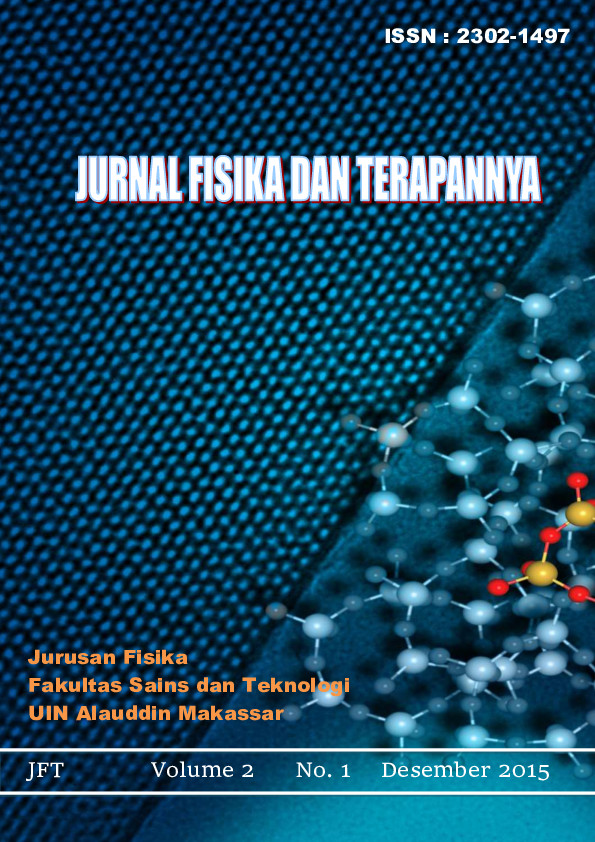KARAKTERISTRIK AIR LAUT SEBAGAI PENGHANTAR ALIRAN LISTRIK
Abstrak
This study aims to determine the effect of NaCl concentration of sea water on the value of voltage and electric current, the amount of power produced from seawater with various concentration and duration of sea water can be utilized as a source of electrical energy. Plate copper (Cu) and plate zinc (Zn) as the electrode and the concentration of NaCl sea water used were obtained from three point locations is Tanjuang Bayam coast, Barombong coast and Je’ne’berang river estuary. The results was show that the concentration of NaCl seawater affect the amount of voltage and current value of the electricity generated is greater concentration of NaCl seawater used, the greater the voltage and electrical current was generat. For the highest concentration was obtained at the point of Cape Shaded locations with large concentrations of 3,4% and a maximum power generated 0,21072 watts while the lowest concentration was obtained at the point of estuaries Jeneberang locations with large concentrations of 3,2% and a maximum power generated 0, 20 331 watts. Effective time used for the utilization of sea water which is the average for ten days to turn on the LED (Light Emithing Dioda).
##plugins.generic.usageStats.downloads##
Referensi
Astuti, Budi, 2011. Pengantar Teknik Elektro, Yogyakarta: Graha Ilmu
Alfi Dewi Setiani, 2013, Makalah Kimia Dasar Larutan, Skripsi, Jakarta: Program Studi Biologi Fakultas Sains Dan Teknologi: Universitas Islam Negeri Syarif Hidayatullah
Bueche, Frederick J., dan Eugene Hecht, 2006, Scaum’s Outlines Teori Dan Soal-Soal Fisika Universitas Edisi Sepuluh, Terjemahan oleh Refina Indiasari, Tahun diterjemahkan , Jakarta: Erlangga
Dougles C., Giancoli, 2001, Fisika Jilid 2 Edisi kelima, Jakarta: Erlangga
Gabriel J.F.,, 2001, Fisika Lingkungan, Jakarta: Hipokrates
Nama Penulis, 2010, Fenomena fisika. Energi listrik air laut, Online, http://fisika21.wardpress.com/27 (Diakses 3 Agustur 2015)


